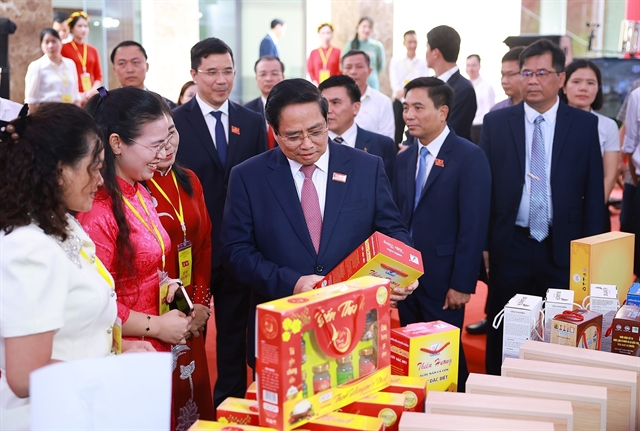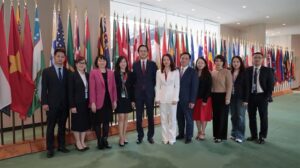PM Chính outlines five key tasks for Thanh Hóa’s 2025–2030 development goals

Thanh Hóa, The Gulf Observer: Prime Minister Phạm Minh Chính on Wednesday delivered the keynote speech at the 20th Party Congress of Thanh Hóa Province for the 2025–2030 tenure, setting out five major tasks to guide the province’s Party Organisation, armed forces, and people in achieving their socio-economic and political objectives.
The Prime Minister urged Thanh Hóa to thoroughly grasp and implement the resolutions and action programmes of the 14th National Party Congress and its own 20th Party Congress, while swiftly materialising the Politburo’s recent strategic decisions in key sectors.
He emphasised the importance of building a clean and strong Party and political system, grounded in democratic centralism, unity, and flexibility. Thanh Hóa, he said, must operate its two-tier local government model efficiently and accelerate the transition from an administration focused on procedures to one that is service-oriented and people-centred. Promoting digital government, digital society, and digital citizenship was also highlighted as a key direction.
The Prime Minister identified personnel development as the “key of the key tasks,” calling for a contingent of capable, ethical, and visionary leaders and Party members who meet the demands of the new era. He underscored the need for stronger inspection and supervision mechanisms to detect and address violations early, as well as to firmly combat corruption, wastefulness, and other negative practices — ensuring “no dark or grey zones, nor areas for vested interests.”
PM Chính called for rapid and sustainable economic development through five strategic breakthroughs. These include economic restructuring and a shift in the growth model based on science, technology, innovation, and digital transformation; the development of green, digital, circular, and sharing economies; and stimulation of both traditional and emerging growth drivers.
The province will concentrate on developing four economic growth hubs — Nghi Sơn, Sầm Sơn, Bỉm Sơn, and Lam Sơn — proposing special mechanisms and policies to transform them into major economic engines. Infrastructure development will be accelerated, especially in transportation, regional connectivity, digital networks, tourism, and services. The Prime Minister also urged the province to harness science and technology to utilise marine and underground resources efficiently.
In addition to economic goals, PM Chính stressed the importance of advancing socio-cultural development, improving social welfare, strengthening defence and security, and enhancing external relations. He called for the building of a peaceful, stable, cooperative, and prosperous border with Laos and the promotion of the border gate economy as a new driver of regional growth.
According to reports presented at the congress, during the 2020–2025 tenure, Thanh Hóa achieved or surpassed 23 out of 27 major targets despite facing intertwined challenges and opportunities. The province’s gross regional domestic product (GRDP) recorded an estimated average annual growth of 10.24 per cent between 2021 and 2025 — ranking fourth nationwide. Its GRDP scale in 2025 is projected to be 1.9 times higher than in 2020, placing it eighth nationwide, while per capita GRDP is expected to reach US$3,750, up 1.7 times from 2020.
For the 2025–2030 period, the provincial Party Organisation has set ambitious goals to sustain double-digit growth and establish Thanh Hóa as a major hub for energy, manufacturing, high-value agriculture, tourism, and logistics.
By 2030, Thanh Hóa aims to rank among the country’s leading localities and, by 2045, to become a prosperous, civilised, and happy province. The province targets an average annual GRDP growth rate of 11 per cent or higher during 2026–2030, a per capita income of at least VNĐ90 million (US$3,415), and a digital economy contributing 30 per cent of GRDP.
Total investment is projected to reach over VNĐ840 trillion, with exports valued at approximately US$15 billion and the urbanisation rate exceeding 50 per cent. At least 90 per cent of grassroots Party organisations are expected to successfully complete their annual tasks.


